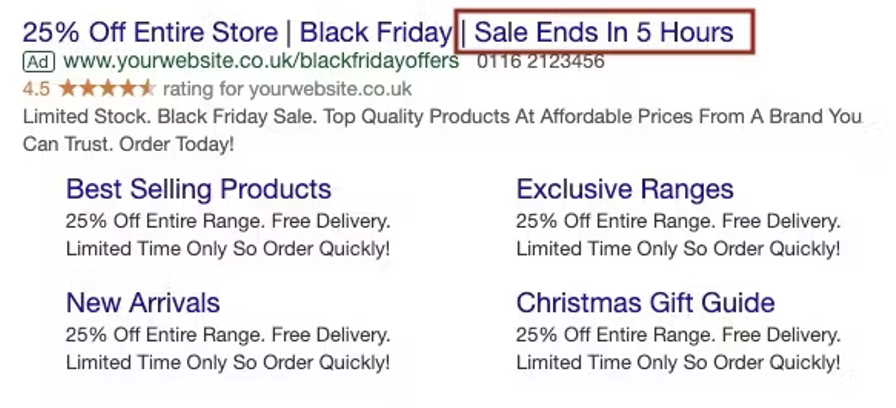Sleigh The Holidays: Four Ways To Grow Sales In 2023

Prior to the proliferation of computers, business financial records were handwritten, with red ink used for losses and black ink for profits. The use of black ink is the reason we call the day after Thanksgiving “Black Friday,” as it was often the day that businesses saw their sales spike to close out the year. While Black Friday has historically marked the unofficial start to the holiday shopping season, things have changed in the last few decades. These days, the holiday shopping season starts as early as late September or early October. To compete against other retail mavens, it’s important to have your holiday plans solidified earlier than ever. Here are four ways marketers can prepare and grow sales in the 2023 holiday shopping season.
1. Learn from mistakes, and double down on successes
Historical data from the previous shopping seasons can be a brand’s hidden superpower. Review your sales and marketing data for key insights and trends to gain insight into how the holidays affect your specific brand or product line. Is your product an impulse buy or do customers spend a long time deciding whether to purchase? Have campaigns historically been limited due to low budgets? Does social revenue grow more quickly than search during holiday periods? Is there a correlation between early-season awareness investment and lower-funnel sales?
These questions, and many more, will help marketers understand where budget is best spent, and what types of results you might expect to see. Learning from past campaigns can help prevent brands from repeating mistakes and allow marketers to better focus on the channels and campaigns that drive the strongest results for your business.
2. Set goals, set budgets, and follow through
Running campaigns without clear goals is like driving a car without a destination. Sure, it’s fun to venture into the unknown, but ultimately, you might end up miles from home without a clear way back. After analyzing historical performance, marketers should have an idea of how demand (search demand, purchase demand, etc.) changes during the holidays. Start by reviewing historical growth as it relates to budget and use those trends to inform holiday marketing plans.
For example, one client felt they should frontload their monthly budget to take advantage of increased purchase behavior during a holiday weekend. However, after looking through historical data, we discovered that, while the client was right that search volume was likely to increase, click costs grew as well without a corresponding bump in conversion rate. Ultimately, at their current budgets, spreading their investment across the entire month would be more profitable than paying a premium to capture that demand over the holiday weekend. Without significant incremental budget investment throughout the rest of the month, frontloading budget would, in fact, hurt revenue and profitability rather than increase it.
Brands should start preparing for the holidays by scaling budgets early. Big jumps in budget can often send ad platforms into a learning phase, disrupting performance and decreasing efficiency. Ahead of this year’s holiday hustle and bustle, increasing budgets moderately in September and October can help campaigns ramp up slowly, preventing large budget jumps in November and resulting in more predictable performance.
3. Create a sense of urgency
 A great way to drive action is to create a sense of urgency through time-bound promotions and deals. For example, using promotion extensions with visible end dates can help drive impulse purchases. In addition, countdown timers — as highlighted to the right — show how long the viewer has until a certain event ends. Pair a countdown timer with ad copy related to a flash sale or limited time offer to drive greater engagement from ad viewers. While countdown timers can be used for short sales, launching new copy too often can run the risk of keeping ads in a learning phase and hurting performance. Consider using a countdown timer for a longer promotional period (several days minimum) to build demand and drive conversion.
A great way to drive action is to create a sense of urgency through time-bound promotions and deals. For example, using promotion extensions with visible end dates can help drive impulse purchases. In addition, countdown timers — as highlighted to the right — show how long the viewer has until a certain event ends. Pair a countdown timer with ad copy related to a flash sale or limited time offer to drive greater engagement from ad viewers. While countdown timers can be used for short sales, launching new copy too often can run the risk of keeping ads in a learning phase and hurting performance. Consider using a countdown timer for a longer promotional period (several days minimum) to build demand and drive conversion.
4. Optimize product feeds and pages
As marketers head into the holiday season, it is important to take some time to review product feeds and both product and landing pages. No matter how much time and money are thrown at a campaign, an out-of-date feed or low-quality product content will likely result in disappointing performance. Here is how to prepare feeds and products pages ahead of the holiday season:
Product feeds: Product feeds are incredibly important as they ensure product ads serve for relevant search queries, and that customers see engaging imagery and copy that drive traffic and sales. Marketers that continue to optimize and update the feed drive significantly stronger performance. Other things to keep in mind include:
- Check that all products have accurate, descriptive titles featuring top keywords customers may be searching. For example, if selling running shoes, a poor title might be “Nike Zoom Running Shoes, Size 11.” A strong title would include other information, in order of importance, such as “Nike Men’s Zoom Road Running Shoes, Size 11, Black.”
- Leverage the appropriate product pricing data schema within the feed. If your product goes on sale, use Google’s “Sale Price” to ensure customers see a strike-through price in the search results.
- Make sure all products have an accurate Global Trade Item Number (GTIN) applied in the feed, and that all GPCs (Google Product Category) are set correctly and as specifically as possible. The GPC Taxonomy List is a great tool to best categorize items.
- Don’t use the exact same feed for social channels as Google/Bing. Social channels have different requirements, such as shorter titles, that look and perform better in social shopping ads. Imagery can also vary between platforms. On search, marketers may want an image of the product itself, while on social, they may see better performance with lifestyle imagery.
Product pages: Clear and accurate product page information can help decrease doubt and uncertainty, helping convert more site traffic into paying customers. It’s important to keep these best practices in mind:
- Implement high-quality product images that showcase all angles of the product. Imagery should highlight product use cases, dimensions, installation process (if applicable), and size
- Keep product details and pricing visible before users need to start scrolling, and offer sizing guides or answer product-specific FAQs as well
- Ensure pricing is easy to understand. If the product is priced in a unique way, offer a built-in calculator or pricing grid to help customers make informed decisions
- Leverage social proof. Reviews from verified customers or snippets/testimonials from well-known publications can increase conversion rate and profitability
Wrapping it all up in a bow:
And there you have it — a marketer’s guide to rocking the holiday sales season like a pro! From the old-school origins of “Black Friday” to the fast-paced digital age, one thing remains clear: nailing holiday sales requires a proactive approach. While individual holidays, such as Black Friday or Prime Day, will drive massive spikes in demand, consumer intent will scale over the entire holiday season; ensure campaigns are set up for success and ramp up budgets early to maximize visibility and revenue. Remember, it’s not just about deals; it’s also about wowing customers with a seamless shopping experience. Get ready to sleigh the holidays with data-driven insights and a dash of strategic sparkle. Happy selling and happy holidays!



